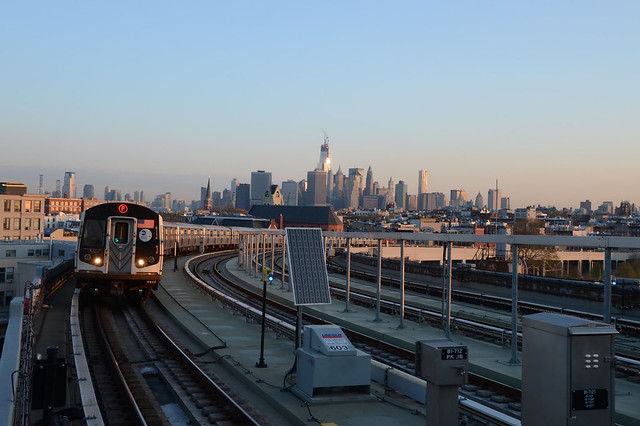For the past few years, the MTA has embraced mobile communication by issuing digital alerts for most major incidents that lead to subway service changes, and a few months ago, the agency posted the alerts archive to its website. An enterprising organization looking to assess major subway delays could parse that database for information, and that’s just what the Straphangers Campaign did this week.
According to the subsequent report, the MTA issued more alerts for the F line than any other, and the G train suffered the fewest. After Superstorm Sandy, though, alerts increased by nearly 30 percent, portending a system suffering from saltwater corrosion. It is, unfortunately, impossible to know from the text alert archive how long these various service changes lasted, but the data provides a further glimpse into the way we ride.
The Straphangers posted the spreadsheet online and offered up a topline summary of their findings:
- The most improved line was the G, which had 19% fewer delay alerts, comparing the first ten months of 2011 to the same period in 2012. The G went from 42 MTA delay alerts in 2011 to 34 alerts in 2012.
- The L worsened the most — by 60% — from 84 MTA alerts of delays in 2011 to 134 alerts in 2012.
- Manhattan was the borough with the most MTA alerts with 1,219 out of 2,669 in the first ten months of 2012, almost half of all total alerts. The Bronx had the least in 2012 with 9%.
- The most improved borough was the Bronx with 17% fewer MTA alerts of delays, going from 283 alerts in 2011 down to 235 in 2012. Queens performed the worst, going from 392 alerts in 2011 to 458 in 2012, a 17% increase in delays.
- “Mechanical problems” generated the most alerts — 36% — or 949 out of 2,669 alerts in 2012, followed by “signals.” While the number of mechanical delays increased 25% between 2011 and 2012, the number of signal delays remained unchanged.
Additionally, as I mentioned, track, switch and other mechanical problems drove a big jump in text alerts after the system reopened in the wake of Superstorm Sandy. From what I’ve heard, these Sandy-related problems will only increase until the MTA commits extensive resources to repairs on a number of flooded tunnels. That time is coming soon, and the service advisories will be quite severe, according to my sources. G and R train riders, in particular, may find their tunnels undergoing extensive repairs in the coming months. The MTA has yet to comment on these reports.
The agency did, however, issue a statement on the Straphangers’ study. Without offering much further explanation, a Transit spokesman said in an email, “The Straphanger Campaign’s use of the MTA’s email Service Alert as a barometer of individual subway line performance does not paint a full picture of service issues. However, it does serve to highlight one of the efforts in place to keep our customers informed.” The statement went on to nod at the wait assessment figures provided to the MTA Board, but those numbers aren’t as indicative of delays as the text alerts.
Ultimately, we know that subway service is fraught with problems. The system prior to Sandy needed to be modernized, and then-MTA Chair Joe Lhota spoke extensively about a capital campaign focused around just that sort of effort. Now that the mechanical aspects to the subway are suffering, that effort becomes even more vital. Unfortunately, it’s likely to get worse before it gets better, and that database of text alerts will grow and grow and grow.



 Hating on the G train has become something of a New York pastime over the past few years. Even people who have no reason to ride the IND Crosstown deride it as an unreliable train. “The G sucks” is a common refrain, if only because it’s what we’re supposed to say.
Hating on the G train has become something of a New York pastime over the past few years. Even people who have no reason to ride the IND Crosstown deride it as an unreliable train. “The G sucks” is a common refrain, if only because it’s what we’re supposed to say.
